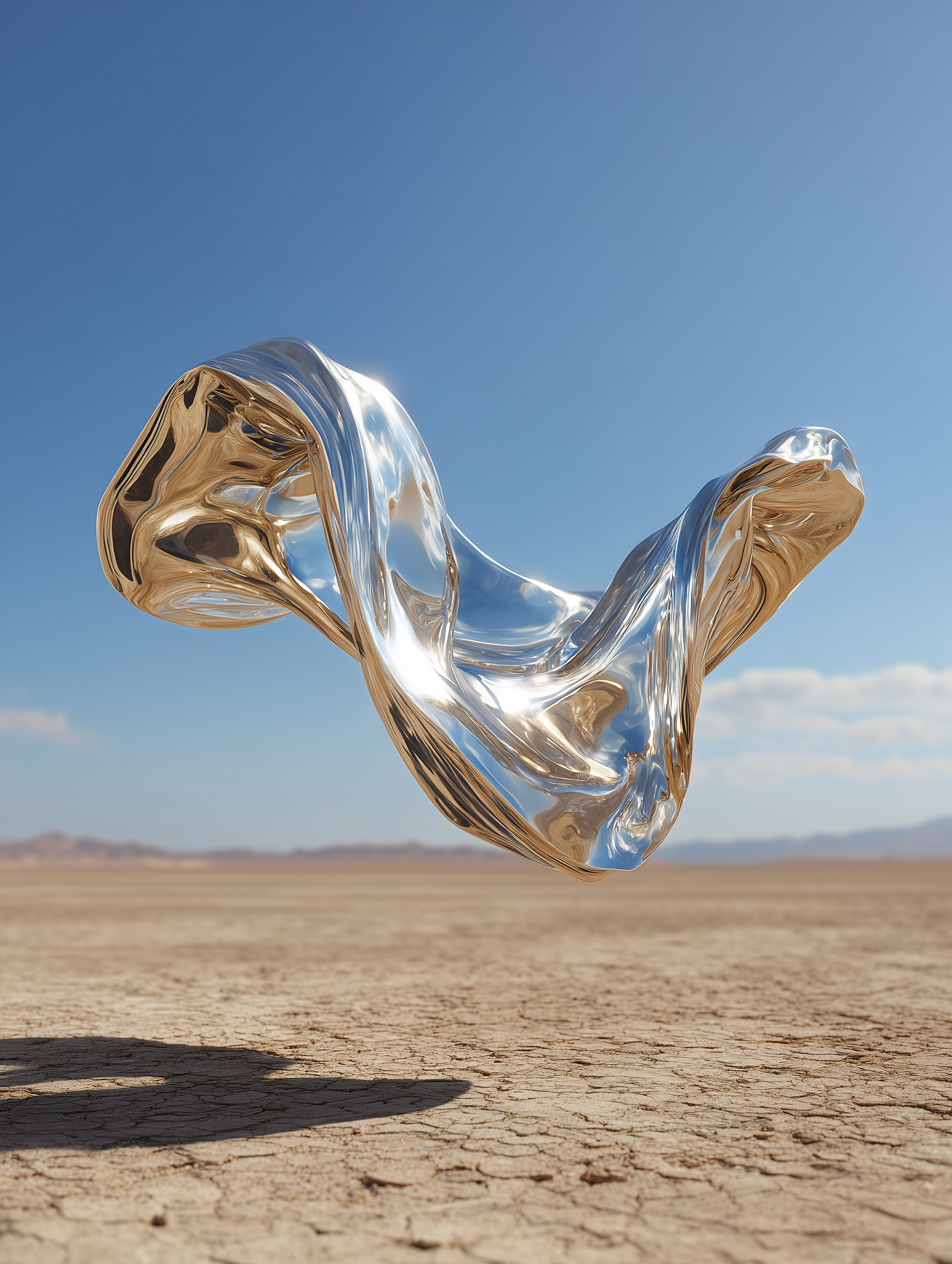How AI decides what’s beautiful

A meditation from Sanctum
There’s a certain kind of beauty we only notice when we’re not looking for it.
The streetlamp that turns a puddle into molten gold. The crease in an old photograph that makes it feel more precious. The hairline crack in a vase that speaks of the hands that once dropped it and chose to keep it anyway.
That kind of beauty – messy, accidental, unrepeatable, has always been ours.
And now, there is AI.
We can ask it for a perfect sunset, and seconds later, it will deliver. The clouds are exactly the right shape, the colours lush, and the horizon crisp. It looks like something we wanted to feel before we even realised it.
It’s hard not to be impressed. It’s also hard not to ask: how is it deciding what’s beautiful?
AI does not watch the tide come in. It does not feel the way dusk settles on skin. It has no lived memory of a summer evening.
What it has is data. Billions of images labelled, liked, and lingered over. It does not “understand” beauty; it maps it. It can be seen, in statistical terms, that humans tend to prefer certain colour gradients, that certain facial proportions are deemed attractive, and that certain compositions hold our attention longer.
When asked to make something beautiful, it averages our preferences. It pulls from the great visual archive of the internet and distils the elements we’ve most collectively celebrated.
And very often, the result satisfies us.
The Trouble With Perfect
Over time, we notice something else: a sameness.
AI beauty is smooth. Polished. Predictable. There are no awkward shadows, no interruptions, and no stray elements that challenge the frame.

Yet the beauty we’ve always found most alive is rarely perfect. It’s in the unexpected, the laughter line that deepens when someone is truly happy, the streak of paint left by a hesitant brush, the accidental harmony of mismatched colours.
These are not flaws to be fixed. They are what give beauty its texture and depth.
AI, in its pursuit of statistical precision, tends to sand these edges away. And in doing so, it risks erasing the very thing that makes beauty linger in the mind.
Whose Standards Are We Training On?
There’s another question: whose vision of beauty does AI inherit?
The internet is not an even field. The images most amplified online reflect the biases of the platforms and cultures that shape them. Certain skin tones, body shapes, and facial structures appear more often in what is labelled “beautiful.” Certain architectural forms, clean lines, and perfect symmetry dominate our feeds.
Video generated via Midjourney
When AI learns from this, it reproduces not a universal sense of beauty, but a narrow and algorithmically reinforced one. Left unchecked, it does not just reflect bias; it multiplies it.
The Comfort Trap
We humans are contradictory in our desires: we want comfort, and we want surprise. The problem is that AI is very good at comfort.
It operates inside a safe zone, broad enough to please, narrow enough to avoid discomfort. This makes sense for a system designed to maximise “likes.” But beauty, historically, often comes from the uncomfortable.
The Impressionists broke the rules of form and light. Punk aesthetics challenged conventions of taste. Brutalist architecture was once dismissed as cold, only to be embraced decades later for its stark honesty.
AI can remix these rebellions once they are accepted, but the first act of breaking away from the pattern still belongs to us.
Teaching a Machine to See the Unseen
So, how do we teach a machine to move beyond the average?
We could feed it with images that are not conventionally attractive but hold emotional weight: the weathered wood of a market stall, the unbalanced geometry of a hand-built chair, the faded mural on a back alley wall.
We could allow it to generate with imperfection as a feature, not a flaw. We could train it not just on what people like instantly but on what they return to days later, the image that stays, not the image that scores.
And perhaps we could teach it to pay attention to the overlooked: the crooked photo frame, the quiet corner of the street, the moment that isn’t staged yet still tells a story.

The Mirror and the Lamp
Right now, AI is more mirror than lamp. It reflects the light we already shine on the world, the places our collective attention has lingered.
But beauty shifts when the light moves. When we look where we haven’t looked before. When someone, or something, casts a beam into the corner and says, ‘Here, notice this.’
If AI is to become more than a mirror, it will need guidance from our curiosity, not just our consensus. It will need to see the world not as a set of averages, but as a landscape where exceptions matter.
Beauty has always been a conversation. Between the object and the observer. Between what is and what we wish could be. Now, that conversation includes the machine.
The question is not just how AI decides what’s beautiful. The question is whether we want its decisions to shape our own.
Because beauty, in its most human form, is rarely safe. It’s often strange, imperfect, or entirely out of place. And once we’ve seen it, we can’t imagine the world without it.

Member discussion